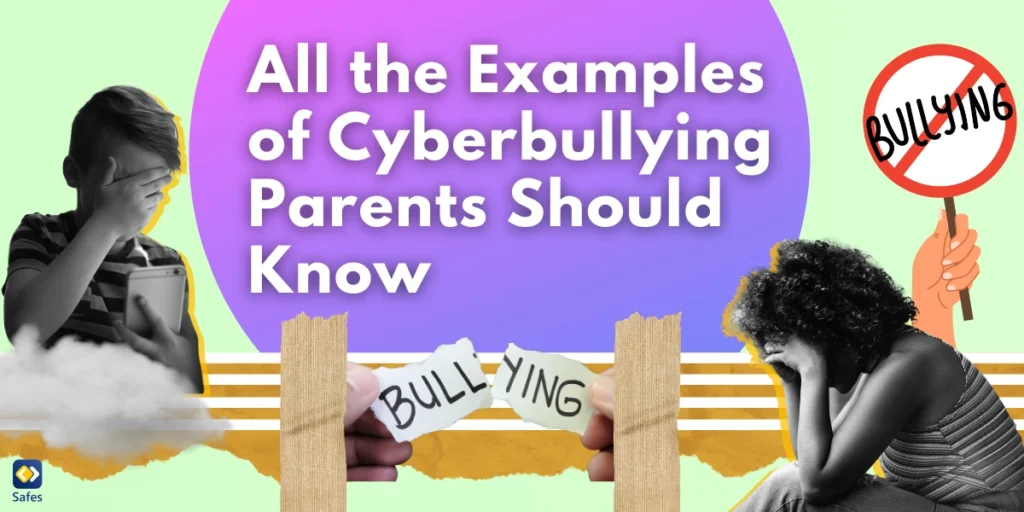In recent years, a new trend has emerged among parents, known as sharenting. Sharenting, a portmanteau of “sharing” and “parenting,” refers to parents sharing images, videos, and details about their children on social media platforms. However, this growing trend has sparked debates about its potential implications for children’s privacy and safety. This article explores the sharenting meaning, its pros and cons, and offers guidance for modern parents navigating this digital phenomenon.
Download and Start Your Free Trial of the Safes Parental Control App
What is Sharenting?
Sharenting refers to the widespread practice among parents of posting content about their children on various social media platforms such as Facebook and Instagram. This content can include photos, videos, personal stories, and other updates about their child’s life. While this may seem like an innocent way to share precious moments with friends and family, it’s essential to understand the potential risks associated with this digital behavior.
The Positive Aspect of Sharenting
Before we discuss the perils of sharing images of your babies and children on social media, let’s talk about some of the positive aspects of sharing family pictures online. After all, sharenting is not entirely negative. It all depends on finding a balance and having online privacy and safety protocols in mind.

Community Building
One of the primary benefits of sharenting is the sense of community it fosters among parents. This practice allows parents to connect with each other, share experiences and advice, and feel less isolated in their parenting journey. It can serve as a support system for new parents, who often find comfort and camaraderie in the shared experiences of others.
Cherished Memories
Another advantage of sharenting is its digital footprint on a child’s life. Parents can reflect on these online memories, reliving their child’s early childhood joyous moments. These digital mementos can also be an invaluable resource for children when they grow older, giving them a glimpse into their past.
Family Updates
Sharenting also enables parents to keep their family and friends updated about their child’s growth and development. This can be particularly beneficial for relatives who live far away and can’t be physically present for the child’s milestones.
The Negative Aspect of Sharenting
While sharenting has advantages, it also has numerous potential drawbacks, primarily concerning privacy and safety concerns.
Privacy Concerns
By sharing your child’s photos and other personal information online, you may unintentionally infringe on your child’s privacy. This is particularly concerning as children grow older and may not appreciate their lives being documented and shared publicly without their consent.
Security Risks
Sharenting can also expose children to various security risks. Personal information shared on social media can be used by malicious actors for identity theft, online grooming, or cyberbullying. You must know these risks and take precautions to protect your child’s online safety.
Unwanted Attention
Sharenting can also lead to unwanted attention or scrutiny. This can potentially result in feelings of embarrassment or discomfort for the child, particularly if the content is shared widely or goes viral.

How to Share Responsibly
Given the potential issues associated with sharenting, you must share responsibly to protect your child’s privacy and safety.
Set Privacy Settings
You should familiarize yourself with the privacy settings on each social media platform and set them to ensure that only trusted friends and family can view your posts. This can significantly reduce the risk of your child’s information falling into the wrong hands.
Obtain Consent
As your child grows older, you should discuss with them what they feel comfortable with being shared online. You should respect their child’s wishes and obtain their consent before posting any content about them.
Limit Personal Information
You should be mindful not to share too much personal information about your child online. This includes avoiding posts that reveal your child’s full name, location, school, or other identifying details.
Introducing Safes Parental Control App
Today, it’s more important than ever for parents to monitor and manage their children’s activities online. Fulfilling this is easier than ever with the Safes parental control app. Safes allows you to monitor your kid’s online sharing and other digital activities, set internet usage limits, and block inappropriate content. With Safes, you can ensure your child has a safe and positive online experience. Also, using such apps can teach your child about online safety from a young age, setting the tone for responsible and safe internet usage.
Try Safes for your child’s safety by downloading it from our website. You can alternatively download it from major app distribution platforms like Google Play and App Store.
You may also be interested in reading these valuable resources about putting parental controls on different platforms:
- Windows parental controls
- Macbook parental controls
- Android parental controls
- iPhone parental controls
Sign up for a free trial of Safes to experience it’s benefits without any initial payment.
Conclusion: To Share or Not to Share?
While sharenting can be a fantastic way for parents to share their children’s milestones and build a supportive community, it’s essential to do so responsibly. By setting appropriate privacy settings, obtaining your child’s consent, and limiting personal information shared, you can mitigate the risks associated with sharenting. The key is finding a balance that respects your child’s privacy and safety while allowing yourself to share your joy and pride in your child’s accomplishments.
Your Child’s Online Safety Starts Here
Every parent today needs a solution to manage screen time and keep their child safe online.
Without the right tools, digital risks and excessive screen time can impact children's well-being. Safes helps parents set healthy boundaries, monitor activity, and protect kids from online dangers—all with an easy-to-use app.
Take control of your child’s digital world. Learn more about Safes or download the app to start your free trial today!




